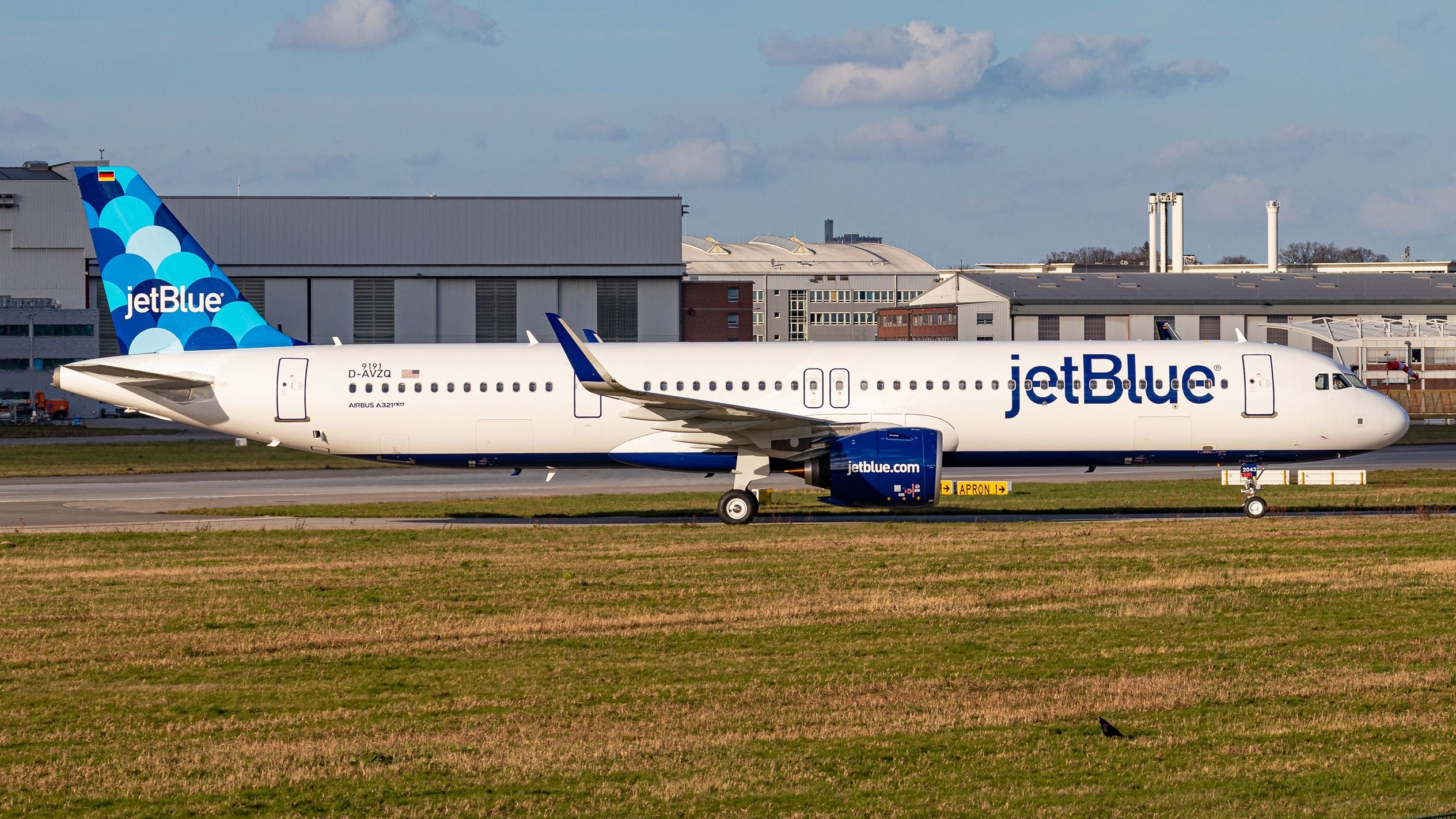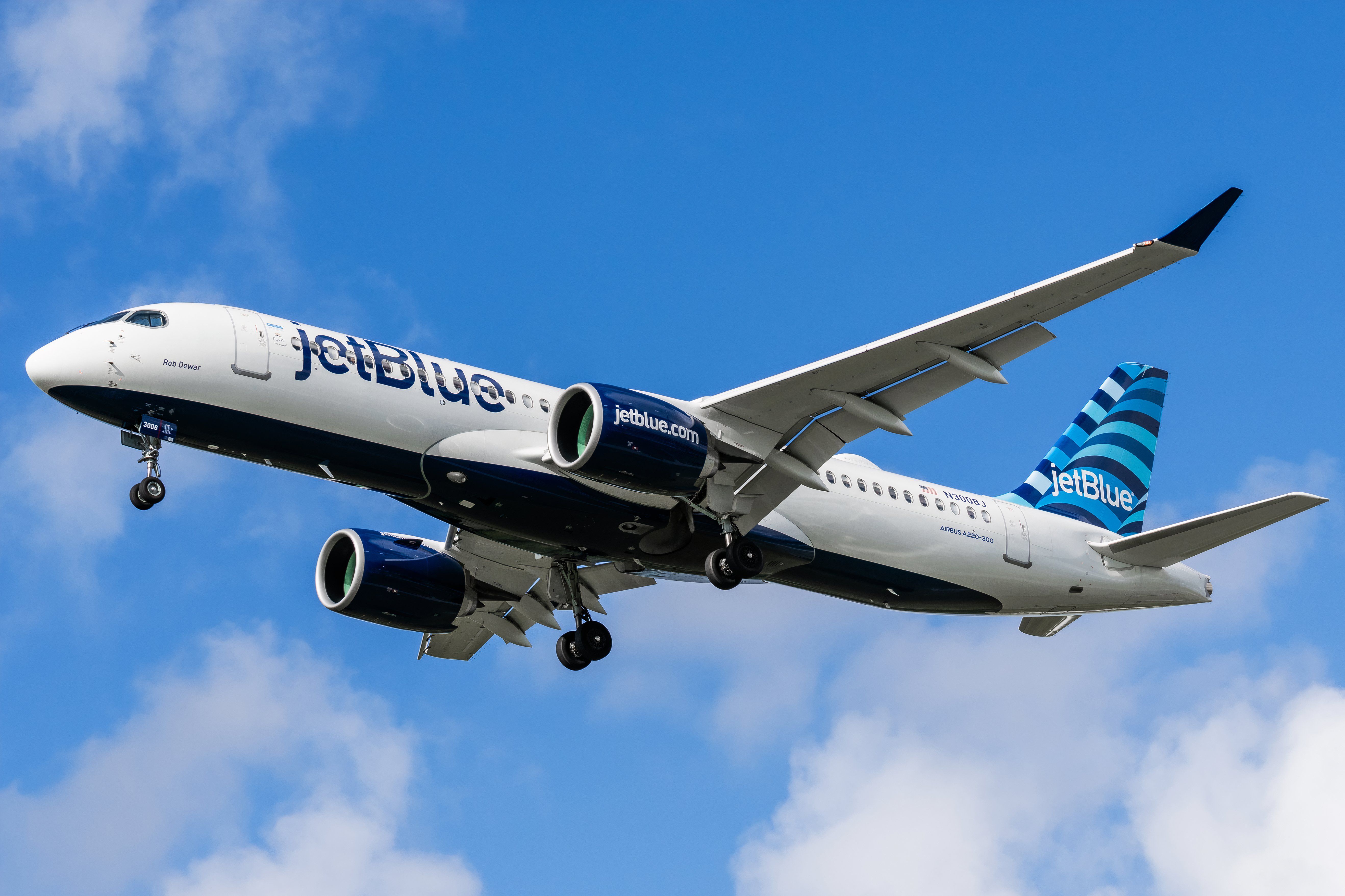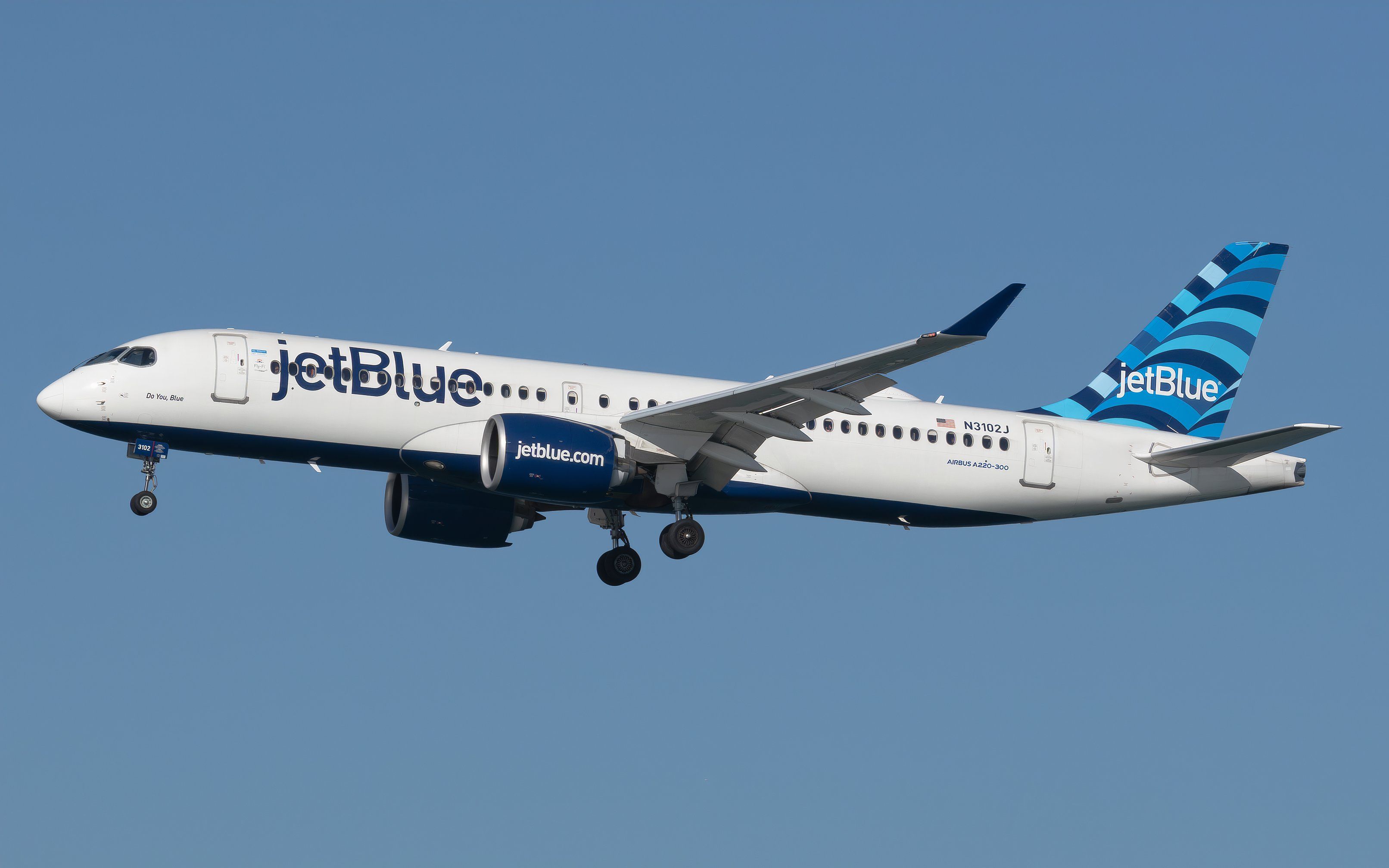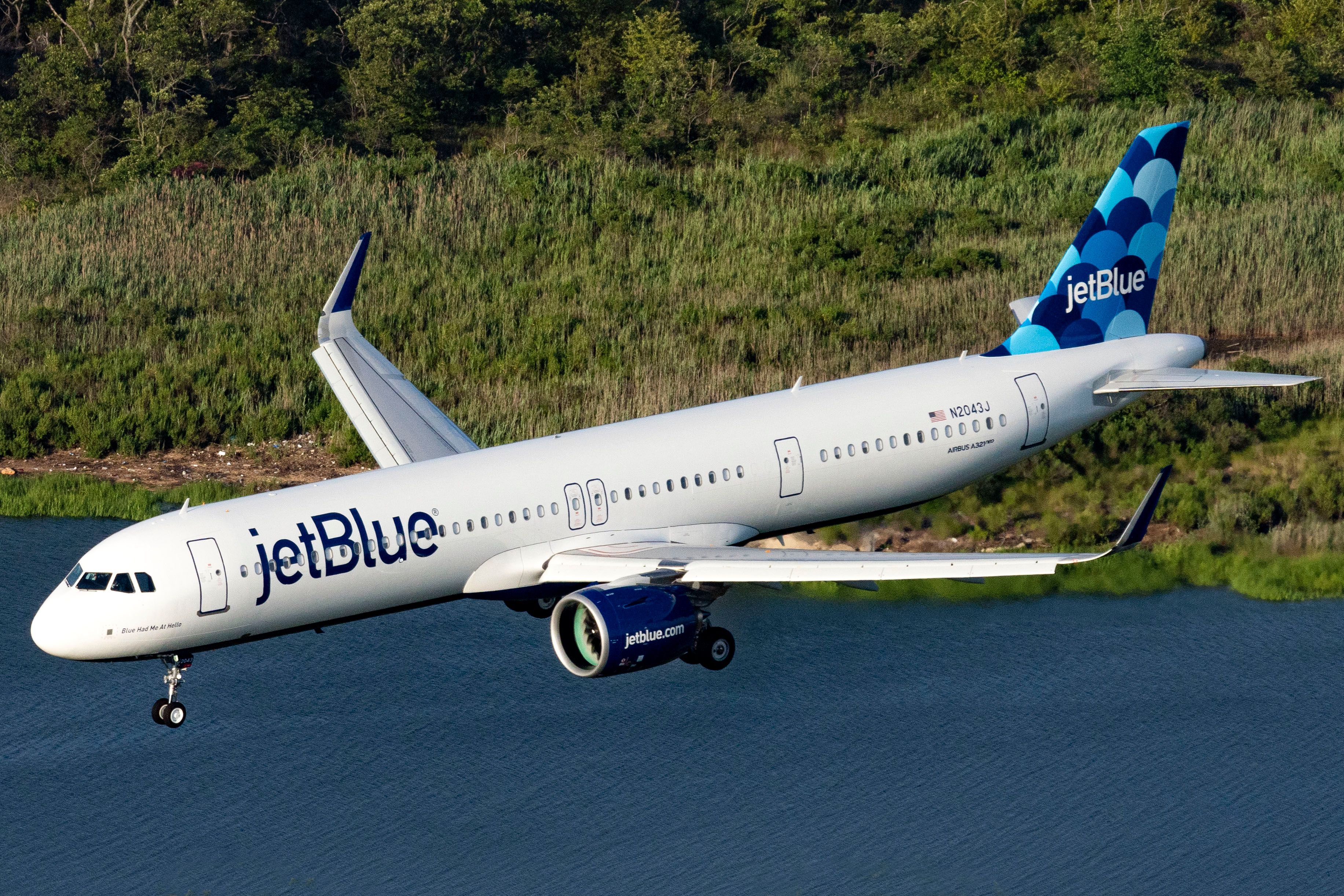Summary
- JetBlue’s JetForward strategy involves restructuring its route network to optimize operations and increase profitability.
- The airline plans to simplify its fleet by prioritizing the delivery of the Airbus A220, which will replace and retire the Embraer E190 aircraft.
- In addition to operational improvements, JetBlue is investing in onboard services such as preferred seating and additional luggage allowance for Blue Basic passengers.
American carrier JetBlue has devised a strategy named JetForward, which the airline aims to follow going forward. The strategy aims to make the airline’s operations more efficient, restructure its route network, simplify its fleet, and ultimately reduce its operational costs.
As part of the strategy, the airline has also identified potential headwinds that the carrier is currently facing and suggested possible solutions for it. This article looks at a few key elements of the JetForward strategy.
Network restructure
Under the JetForward strategy, one of the key elements under focus for
JetBlue
is the restructuring of the route network, especially exiting routes that have been identified to be unprofitable, while redeploying the airline’s resources along the East Coast network to optimize and strengthen the airline’s leisure network.
As part of the network restructure, the airline plans to redeploy around 20% of its flights to the East Coast of the United States, with a particular focus on optimizing operations at New York LaGuardia Airport (LGA) and
Newark Liberty International Airport
(EWR).
Photo: Vincenzo Pace | Simple Flying
JetBlue has already ceased services to 10 of the 15 cities it planned to exit throughout 2024. The remaining five cities will stop seeing JetBlue services in October.
|
City |
Airport Code |
Final day of service |
|---|---|---|
|
Charlotte |
CLT |
October 26th |
|
Minneapolis |
MSP |
|
|
San Antonio |
SAT |
|
|
Burbank |
BUR |
|
|
Tallahassee |
TLH |
October 27th |
Additionally, the airline plans to cease operating on a few more routes in January 2025. Overall, the airline would have exited over 50 routes from January 2024 through January 2025.
Simplifying the fleet
Another element of the strategy is for the airline to simplify its fleet going forward. JetBlue, during 2024 H1, took delivery of 14 new aircraft, and data as of July 30th shows that the aircraft is meant to receive a further 13 aircraft during 2024 H2. However, in the years to come, the airline has decided to prioritize the delivery of the
Airbus A220
aircraft over the A321neo.
The airline has deferred delivery of 44 A321neo aircraft due to be delivered between 2025 and 2029 to now be delivered beyond 2030.
Photo: Vincenzo Pace | Simple Flying
The carrier plans to replace the Embraer E190s in its fleet with the incoming A220s, which will offer the airline 90% more premium capacity while reducing unit costs by 30%. Furthermore, there will be added benefits of just operating two aircraft types in terms of economies of scale.
As per the airline’s contracts, JetBlue will be returning 30 aircraft, which includes E190s and A320s, throughout 2024 and 2025. While this will mark the end of E190 operations with the airline, JetBlue plans on extending leases or purchasing the A320s off lease in order to maintain capacity lost by the grounding of the A320neo family aircraft due to global issues with the PW1100G (GTF) engines.
Product improvements
While the strategy looks at methods to right-size the airline’s operations and make them more efficient, JetBlue is also investing in its onboard products and other areas to ensure passenger service is improved. This investment includes allowing Blue Basic passengers to have a free carry-on bag when flying and introducing the concept of preferred seating onboard flights.
Photo: Vincenzo Pace | Simple Flying
Additionally, the airline has announced that it will be making a multi-year investment to improve its on-time performance. The airline states that this is a solution to mitigate the issues caused by shortages of Air Traffic Controllers at the airport while also improving passenger experience.
Furthermore, the carrier has announced that it will launch services to cities where it sees profitability and introduce the JetBlue Mint product to more cities within its network, further improving the onboard customer experience.




